Chengdu Museum is located at No. 1 Xiaohe Street, Qingyang District, Chengdu City, Sichuan Province. Founded on September 15, 1958, it also operates under the name "Chengdu China Shadow Puppet Museum". It is the first national-level museum in Sichuan Province and the only one of its kind in Chengdu, officially accredited by the State Council in 2006. In 2020, it was rated as a National First-Class Museum and is also the largest comprehensive urban museum in Southwest China.
The new building of the museum covers an area of approximately 17 mu (about 11,333 square meters), with a total construction area of around 65,000 square meters and an exhibition area of about 20,000 square meters. It has 9 floors in total, including 5 above-ground floors and 4 underground floors. Additionally, there is a 100-meter-long viewing corridor that offers a panoramic view of Tianfu Square. As of 2023, the museum has a collection of 221,967 items (sets), among which 1,399 items (sets) are classified as precious cultural relics.
Historical and Cultural Background
On September 15, 1958, the Chengdu Municipal People's Government established the Preparatory Committee of Chengdu Local History Museum. The committee was chaired by Li Jieren, a renowned writer and then Deputy Mayor of Chengdu. The museum was initially located in Daci Temple, responsible for collecting, surveying, excavating, and preserving cultural relics in Chengdu. In 1974, the Chengdu Municipal Bureau of Culture set up the Chengdu Cultural Relics Management Office, which was based in Wenshu Monastery and resumed the cultural and museum-related work of the former Local History Museum.
In 1982, Chengdu integrated relevant cultural relics management institutions to form Chengdu Museum, with its location designated at Daci Temple on Dongfeng Road, Chengdu. It officially opened to the public on October 1, 1984. In December 2004, Chengdu Museum moved out of Daci Temple and temporarily operated in Qintai Building, where it focused on database construction, collection archive organization, and preparation for the construction of the new museum.
In July 2009, the Chengdu Urban Planning Committee approved the optimized architectural design plan for the new Chengdu Museum. In September of the same year, the foundation-laying ceremony for the new museum was completed. In January 2010, the Chengdu Municipal Development and Reform Commission approved the project proposal for the new museum, marking the official and full launch of its construction. In June 2016, the new Chengdu Museum began a trial operation for the public and officially opened on September 15 of that year. In 2020, the museum initially completed the construction of a basic smart museum and information infrastructure.
Major Exhibitions
Blooming Flowers in Jin Guan City: Chengdu Historical and Cultural Exhibition (Ancient Section)
Located on the 2nd and 3rd floors of the exhibition hall, this is a key part of the comprehensive exhibition on Chengdu's history. On the 2nd floor, the exhibition hall "Chengdu Emerges Under the Nine Heavens: Chengdu in the Pre-Qin Period" takes the development of the Shu culture in the Pre-Qin Period as its main thread. Through more than 240 exquisite cultural relics—such as those related to the Baodun Culture ancient city site group from the late Neolithic Age, and relics from the Sanxingdui and Jinsha sites—it showcases the ancient Shu civilization of the Pre-Qin Period. It also uses scene restorations and sand table models to introduce the daily life of the ancient Shu people.
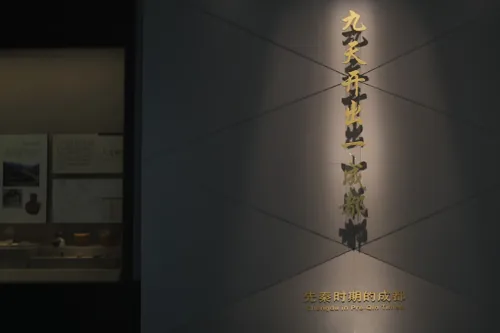
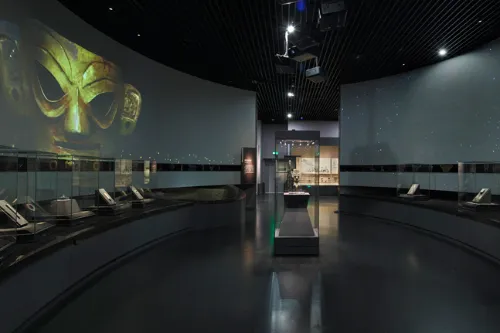
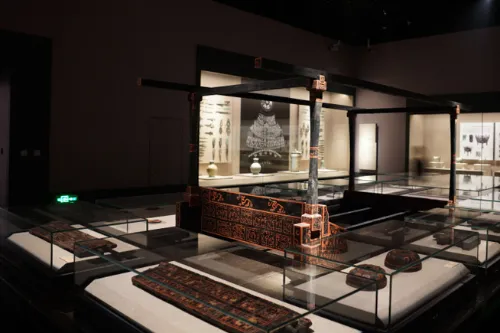
Also on the 2nd floor is the exhibition hall "Western Shu: The Land of Abundance—Chengdu from the Han Dynasties to the Wei, Jin, Southern and Northern Dynasties". This hall focuses on Chengdu during this period, with a large number of cultural relics from the Han Dynasty. It introduces Chengdu's prosperity as a political, economic, and cultural center in Southwest China at that time, as well as its role in the Three Kingdoms pattern and the Silk Road.
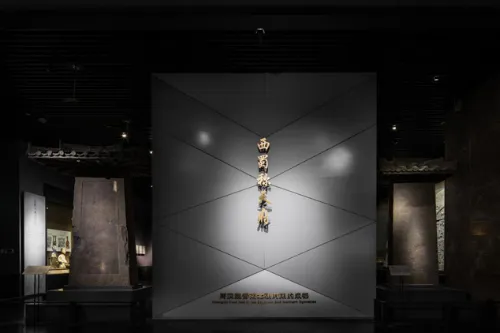
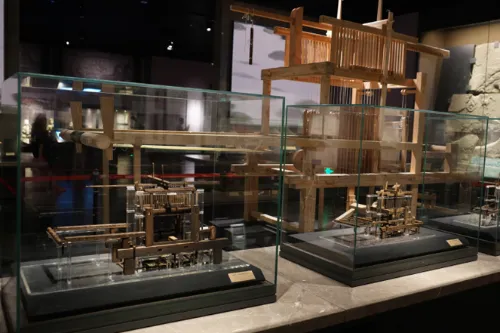

On the 3rd floor, the exhibition hall "A Bustling Metropolis: Chengdu from the Sui, Tang, Five Dynasties to the Song and Yuan Dynasties" displays over 600 items (sets) of cultural relics, illustrating Chengdu's prosperity during this period—such as the grand scene of "Yangzhou First, Yizhou Second" (referring to Chengdu as Yizhou) in the Sui and Tang Dynasties. It also includes related art exhibits and miniature scenes.
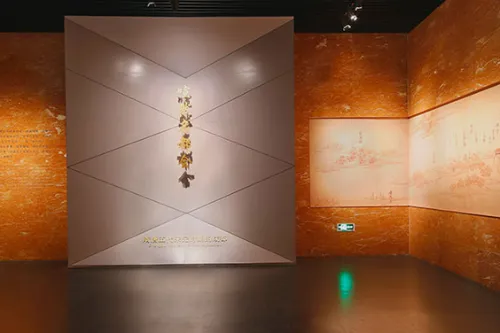
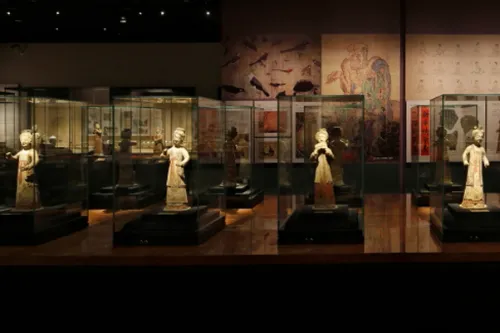
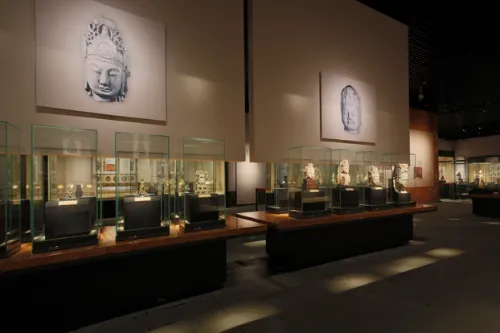
Another exhibition hall on the 3rd floor, "Red Pavilions Glow at Dusk: Chengdu in the Ming and Qing Dynasties", displays architectural components and models of the Shu Prince's Mansion of the Ming Dynasty, reflecting Chengdu's important status as the capital of Sichuan Province and its prosperous scene during the Ming and Qing Dynasties.
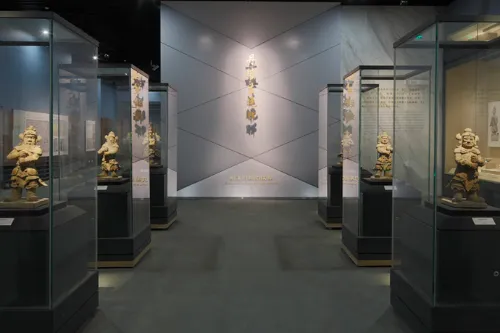
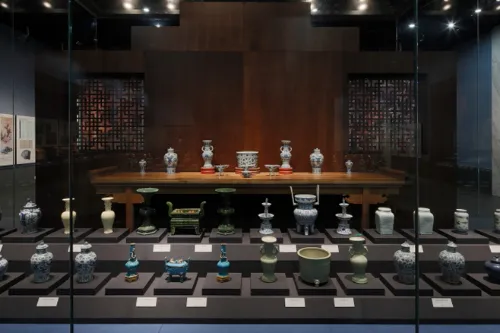
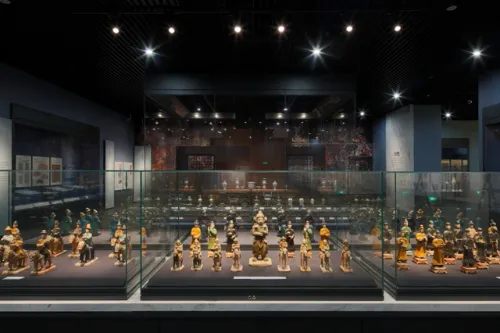
Blooming Flowers in Jin Guan City: Chengdu Historical and Cultural Exhibition (Modern Section)
Located on the 4th floor of the museum, this section uses cultural relics to present Chengdu's modern history. It introduces Chengdu's role as a key source of the Railway Protection Movement, a strategic hub in the rear area during the War of Resistance Against Japanese Aggression, and a major battlefield for the liberation of Southwest China.
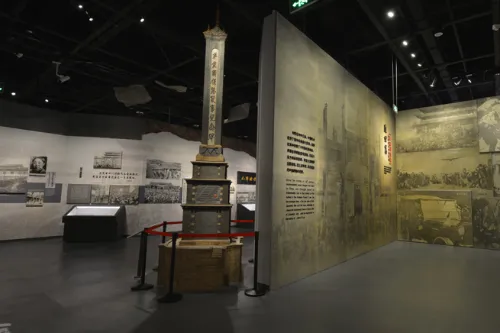

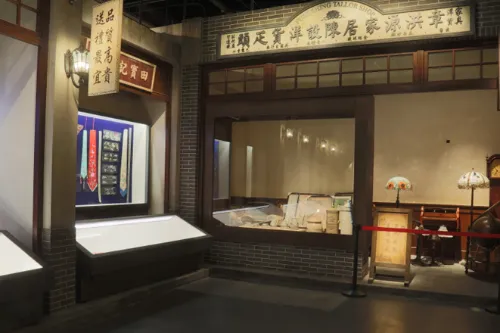
Blooming Flowers in Jin Guan City: Chengdu Historical and Cultural Exhibition (Folk Custom Section)
Located on the 4th floor, this section is divided into four units: "Memories of Old Streets and Lanes", "Sichuan People's Love for Delicacies", "Festive Joy Throughout the Year", and "Tea Houses: A Microcosm of Chengdu". Through four key themes—streets and lanes, food, recreation, and tea houses—it connects elements of daily life and production customs, showcasing Chengdu's unique cultural temperament and spiritual style.

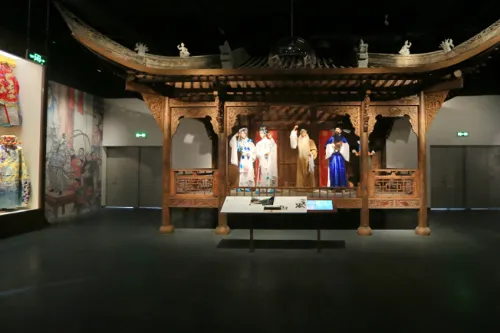
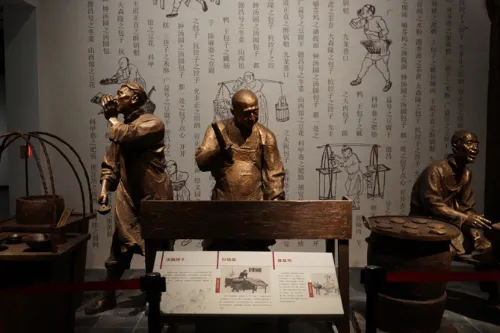
Dance of Shadows, Myriad Forms: Exhibition of Chinese Shadow Puppets
Located on the 5th floor of the museum, this exhibition features nearly 2,000 highly representative and unique cultural relics (sets). It marks the first time in China that Chinese shadow puppets and puppets have been systematically organized and comprehensively displayed. The curatorial team of Chengdu Museum has collaborated in-depth with Chinese-French exhibition design teams, interpreting the traditional puppet show art through an international exhibition art language. The exhibition hall also includes a number of original stories, plays, and multimedia installations.
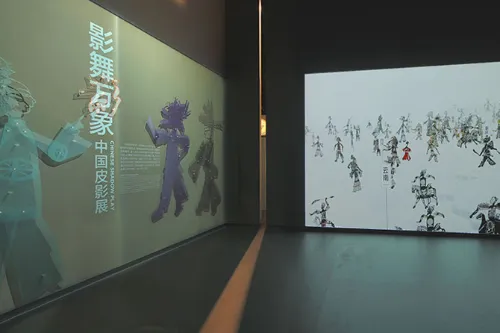
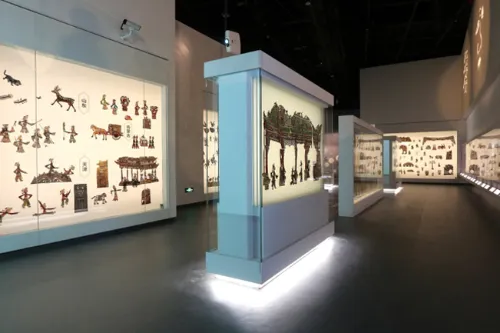
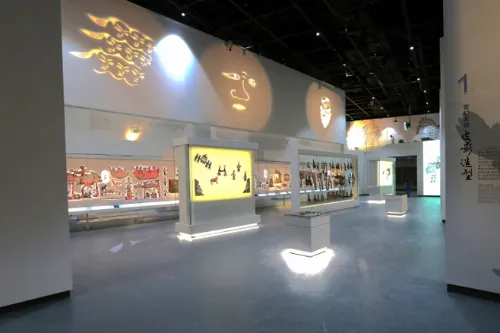
Puppet Shows, Vast World: Exhibition of Chinese Puppets
Situated in the northern part of the 5th-floor exhibition hall, it covers an area of over 400 square meters and displays more than 200 physical exhibits. The exhibition traces the history of Chinese puppets, introduces the distribution and characteristics of still-popular puppet show types such as string puppet shows and rod puppet shows, as well as the development of puppet performance and modeling art. It also includes introductions to relevant puppet-making and performance artists.
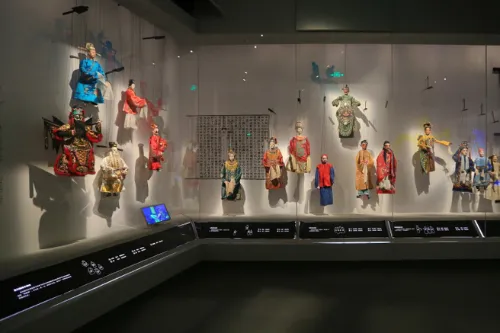
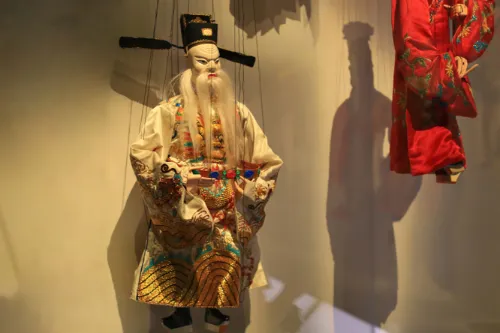
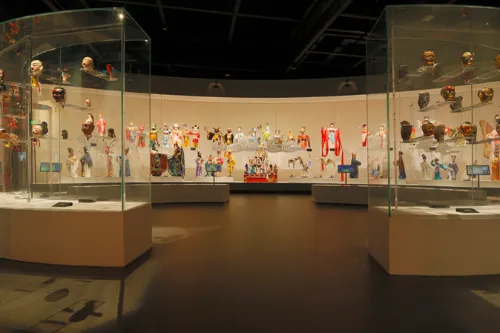
Man and Nature: The Behring Donation Exhibition
Located on the 1st floor, this is the first nature-themed exhibition since the establishment of Chengdu Museum. It displays more than 300 animal specimens, presenting the characteristics and stories behind diverse species and ecosystems across different continents from multiple perspectives. It also elaborates on the relationship between humans and nature.
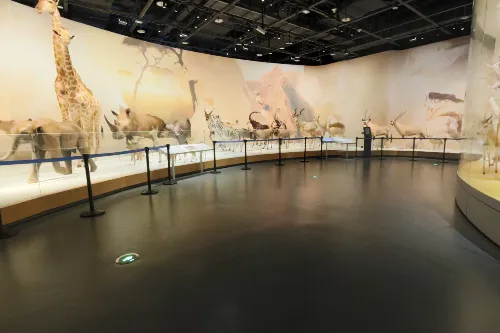
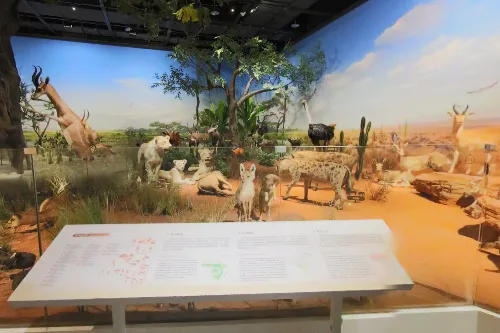
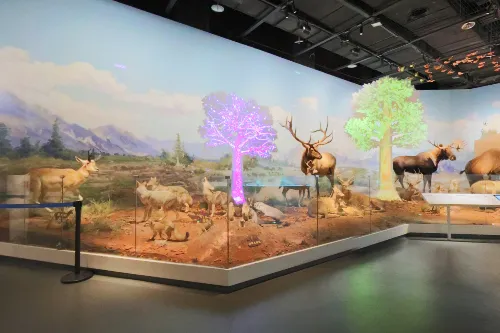
Visiting Route
If you have ample time, you can start your visit with "Man and Nature: The Behring Donation Exhibition" on the 1st floor to learn about diverse species and ecosystems. Then proceed to the 2nd floor and visit the exhibition halls "Chengdu Emerges Under the Nine Heavens: Chengdu in the Pre-Qin Period" and "Western Shu: The Land of Abundance—Chengdu from the Han Dynasties to the Wei, Jin, Southern and Northern Dynasties" in sequence to experience the ancient Shu civilization and the early development of Chengdu. Next, go to the 3rd floor to appreciate the cultural relics in "A Bustling Metropolis: Chengdu from the Sui, Tang, Five Dynasties to the Song and Yuan Dynasties" and "Red Pavilions Glow at Dusk: Chengdu in the Ming and Qing Dynasties", and admire the prosperity of Chengdu in different dynasties. After that, head to the 4th floor to visit "Blooming Flowers in Jin Guan City: Chengdu Historical and Cultural Exhibition (Modern Section)" and "Blooming Flowers in Jin Guan City: Chengdu Historical and Cultural Exhibition (Folk Custom Section)" to understand the modern history and folk culture of Chengdu. Finally, go to the 5th floor to visit "Dance of Shadows, Myriad Forms: Exhibition of Chinese Shadow Puppets" and "Puppet Shows, Vast World: Exhibition of Chinese Puppets". If time is limited, you can focus on "Blooming Flowers in Jin Guan City—Chengdu Historical and Cultural Exhibition (Ancient Section)" on the 2nd and 3rd floors as well as the Folk Custom Section on the 4th floor to quickly grasp the essence of Chengdu's history and culture.
Visiting Tips
- Check the latest exhibition information and related events in advance on the official WeChat public account or website of Chengdu Museum to better plan your visiting route.
- Try to avoid peak hours on holidays and weekends, so you can enjoy the exhibits more comfortably and reduce waiting time. If you have to visit during peak hours, it is recommended to arrive early to line up for tickets or make a reservation.
- You can rent an audio guide or join the museum's regular free guided tours to better understand the historical and cultural stories behind the cultural relics. The free guided tours are usually available at 10:00 and 14:00 every day, and the specific schedule is subject to the museum's daily arrangement.
- The visiting time inside the museum is relatively long, so it is recommended to wear comfortable shoes. Meanwhile, there are rest areas in the museum where you can take a break when needed.
- You can bring a notebook and a pen to record information about cultural relics that interest you or your own visiting reflections.
Notes
- Abide by the museum's visiting order, do not make loud noises, and maintain a quiet visiting environment.
- Touching cultural relics and damaging exhibition facilities are strictly prohibited. Some cultural relics are sensitive to light, so using flash photography is forbidden. Please follow the on-site signs for specific regulations.
- Smoking and eating are not allowed inside the museum; you can eat and drink in the designated areas outside the museum.
- Visitors with children must take good care of them and prevent children from running or frolicking inside the museum to avoid disturbing other visitors or damaging cultural relics.
- In case of an emergency, follow the instructions of the museum staff.
- Keep your personal belongings safe, especially in crowded areas and when using lockers, to prevent loss.
Transportation
- Subway: Take Chengdu Metro Line 1 or Line 2, get off at Tianfu Square Station, and walk to the museum after exiting through the corresponding exit.
- Bus: Multiple bus routes are available, such as Route 1, 4, 5, 16, 37, 55, 56, and 61. Get off at Tianfu Square East, West, South, or North Station, then walk to the museum.
- Self-driving: For visitors driving to the museum, there are parking lots nearby. However, parking spaces may be tight during peak hours such as holidays, so it is recommended to plan your travel time in advance.
Opening Hours
The museum is open from Tuesday to Sunday. In winter (November 1 to April 30 of the following year), the opening hours are 09:00 - 20:00, and admission stops 1 hour before closing every night. In summer (May 1 to October 31), the opening hours are 09:00 - 21:00, and admission stops 1 hour before closing every night. It is closed all day on Mondays (except legal holidays), New Year's Eve, and the first day of the Lunar New Year.
Tickets
Admission is free.
You can search for the official WeChat public account of the scenic spot "成都博物馆" on WeChat to get the latest updates or make an online reservation.
Online Booking
Click here to jump to the Trip.com ticketing platform for ticket purchase.


